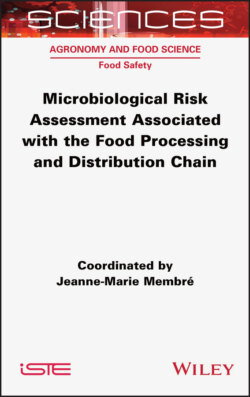Читать книгу Microbiological Risk Assessment Associated with the Food Processing and Distribution Chain - Jeanne-Marie Membre - Страница 14
Campylobacter spp.
ОглавлениеCampylobacter spp. are a major cause of foodborne diarrheal disease. Infection with Campylobacter is usually acquired by consuming contaminated foods such as undercooked poultry and raw milk; contaminated broiler meat is considered the most significant source of this hazard to humans.
According to a study by ANSES (2018), in France, over the period 2006–2015, the main food categories identified at the time of Campylobacter outbreaks were meats (67%) and composite dishes (18%). Poultry was implicated in 71% of the outbreaks caused by meat. The composite dishes were basically sandwiches, mixed salads and ready-cooked meals. Eggs and egg products, milk and milk products and water accounted for a total of 9% of outbreaks.
Death from campylobacteriosis is rare and is usually limited to very young or elderly patients or those suffering from another serious illness such as AIDS. Complications such as bacteremia, hepatitis, pancreatitis and miscarriage have all been reported with varying frequency. Post-infection complications can include reactive arthritis, which can last for several months, and neurological disorders such as Guillain–Barré syndrome, a form of paralysis that can lead to severe respiratory and neurological dysfunction or death in a few cases.
According to the FERG, in 2010, Campylobacter spp. foodborne illnesses were responsible for more than 95 million cases of disease and just over 21,000 deaths worldwide. Since 2005, campylobacteriosis has been the most frequently reported foodborne illness in the European Union, with more than 236,000 confirmed cases in 2014. However, it should be noted that the growing trend in the incidence of campylobacteriosis in recent years is partly due to the improvement of surveillance and diagnostic systems in a number of European Union Member States.
Prevention consists of control measures at all stages of the food chain in order to reduce transmission, from the environment to farms, through enhanced biosecurity, appropriate wastewater and fecal disposal systems, hygienic slaughter and the application of good food-handling practices, in particular avoiding cross-contamination and ensuring proper heat treatment of poultry products.
